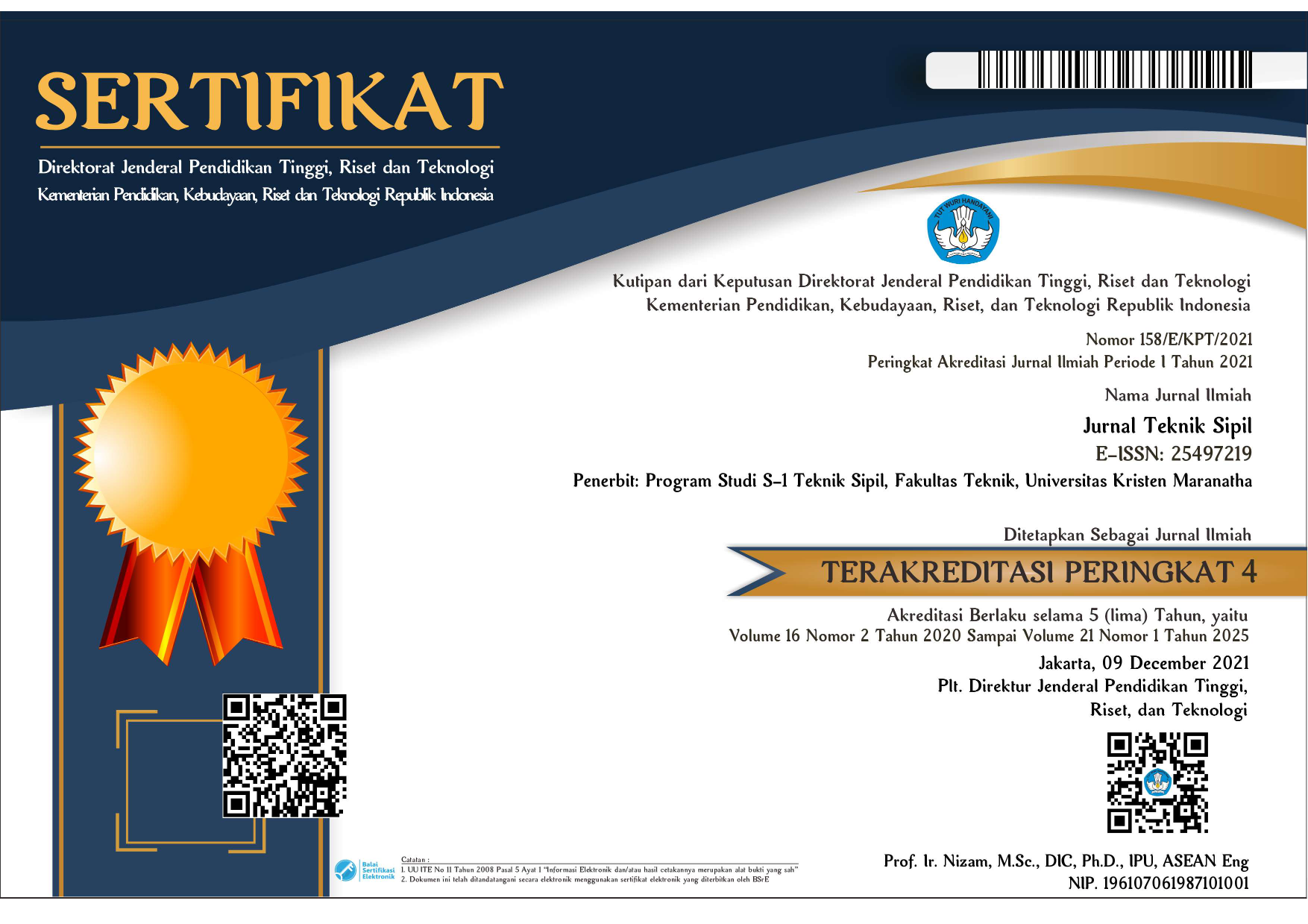Study on Thrust Load Analysis for Reinforced Concrete Buildings
DOI:
https://doi.org/10.28932/jts.v2i1.10358Keywords:
Thrust Load Analysis, Time History Analysis, Regular Building, Irregular BuildingAbstract
The planning of earthquake-resistant building structures in Indonesia is very important considering that most of Indonesia is located in an earthquake area with moderate to high intensity. The latest trend in earthquake-resistant building planning today is performance-based design. The performance-based planning concept is a combination of resistance and service aspects. In this study, six reinforced concrete buildings with moment-bearing frame structural systems with special and medium criteria, ten stories high, consisting of a regular (symmetrical) building and an irregular (symmetrical) building, were designed in accordance with the Earthquake Resistance Planning Procedure for Buildings [SNI 1726, 2002] and the Concrete Structure Calculation Procedure for Buildings [SNI 03-2874, 2002]. The seismic behavior of these structures was evaluated using static nonlinear/pushover analysis and inelastic dynamic time history analysis. The study results show that the pushover analysis yields actual ductility (ua) and seismic reduction factor (R) greater than the design pq and R, so the pushover analysis is rational enough to be used in determining the ductility and R factor of regular reinforced concrete building structures. At the same transition target, the building designed with SRPMK generates less base shear force than the building designed with SRPMM. The results of the performance-based design evaluation show that all the buildings reviewed are included in the Damage Control Performance level so that the building is in a category that in the post-earthquake damage that occurs varies between the Immediate Occupancy and Life Safety performance levels, the risk of casualties is very low, the building structure may be damaged, but does not collapse. While the results of the time history analysis show for all buildings analyzed with the 1940 El Centro, 1992 Flores and 1971 Pacoima Dam earthquakes, the transitions, drifts and plastic joint rotations that occurred have not exceeded the allowable limits, while for the Bucharest earthquake produced transitions and drifts that exceeded the ultimate limit performance, buildings in region 4 produced plastic joint rotations that have not exceeded the allowable limits and buildings in region 6 rotations have exceeded.Downloads
Download data is not yet available.
Downloads
Published
2006-04-01
How to Cite
Pranata, Y. A., & Simanta, D. (2006). Study on Thrust Load Analysis for Reinforced Concrete Buildings. Jurnal Teknik Sipil, 2(1), 25–44. https://doi.org/10.28932/jts.v2i1.10358
Issue
Section
Articles
License
Copyright (c) 2024 Yosafat Aji Pranata, Djoni Simanta

This work is licensed under a Creative Commons Attribution-NonCommercial 4.0 International License.


















